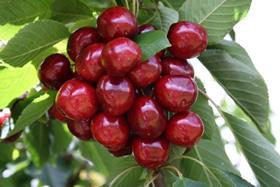
A cold spring, occasional frosts, and rains that have been both heavier and later than previous years, have marred the start of Chile’s 2015/16 cherry campaign and forced the Chilean Cherry Committee to reduce its estimate for the season.
As of week 46, Chile had exported 32,661 cartons of cherries compared 992,334 cartons in the same period last year. The committee said this was a reflection of a delay in harvest dates caused in part by an unusually cold spring, as well as a drop in production due to climatic phenomena.
The committee, which represents 84 per cent of Chile’s export volume, also reduced its export forecast from 120,000 tonnes to 88,500 tonnes.
“Official weather reports indicate that El Niño will be present in the South Pacific until mid-December, which means that precipitation will be above normal. This will inevitably impact the development of an important period for fruit exports,” exporter association Asoex said in a statement.
Furthermore, fruit in central Chile that is currently in bloom, including grapes, kiwifruit and apples, will require additional phytosanitary controls and treatments to control the higher incidence of fungi and bacteria resulting from the wet weather.
“Also, other species like apples, pears, stonefruit and blueberries will require some additional phitosanitary treatments,” the association said.
Temperature patterns have also been different than in previous years. Temperatures in northern Chile have been above normal, while temperatures from Santiago to the south have been below normal.
Asoex president Ronald Bown said the overall picture of fruit exports this season was becoming increasingly complex and that he expected both the public and private sectors to come together to jointly address the issues facing the industry.
“Our primary objective is providing reliable fresh fruit to all our global markets,” Bown said.






No comments yet